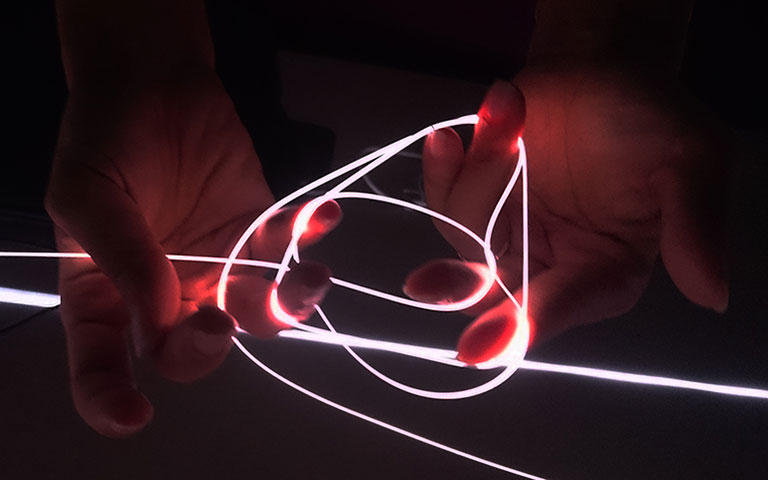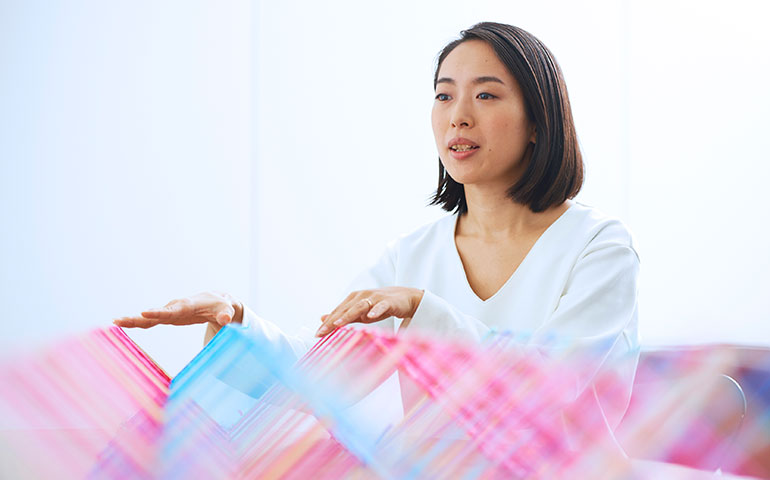Enchanting Light of a Type Never Seen Before
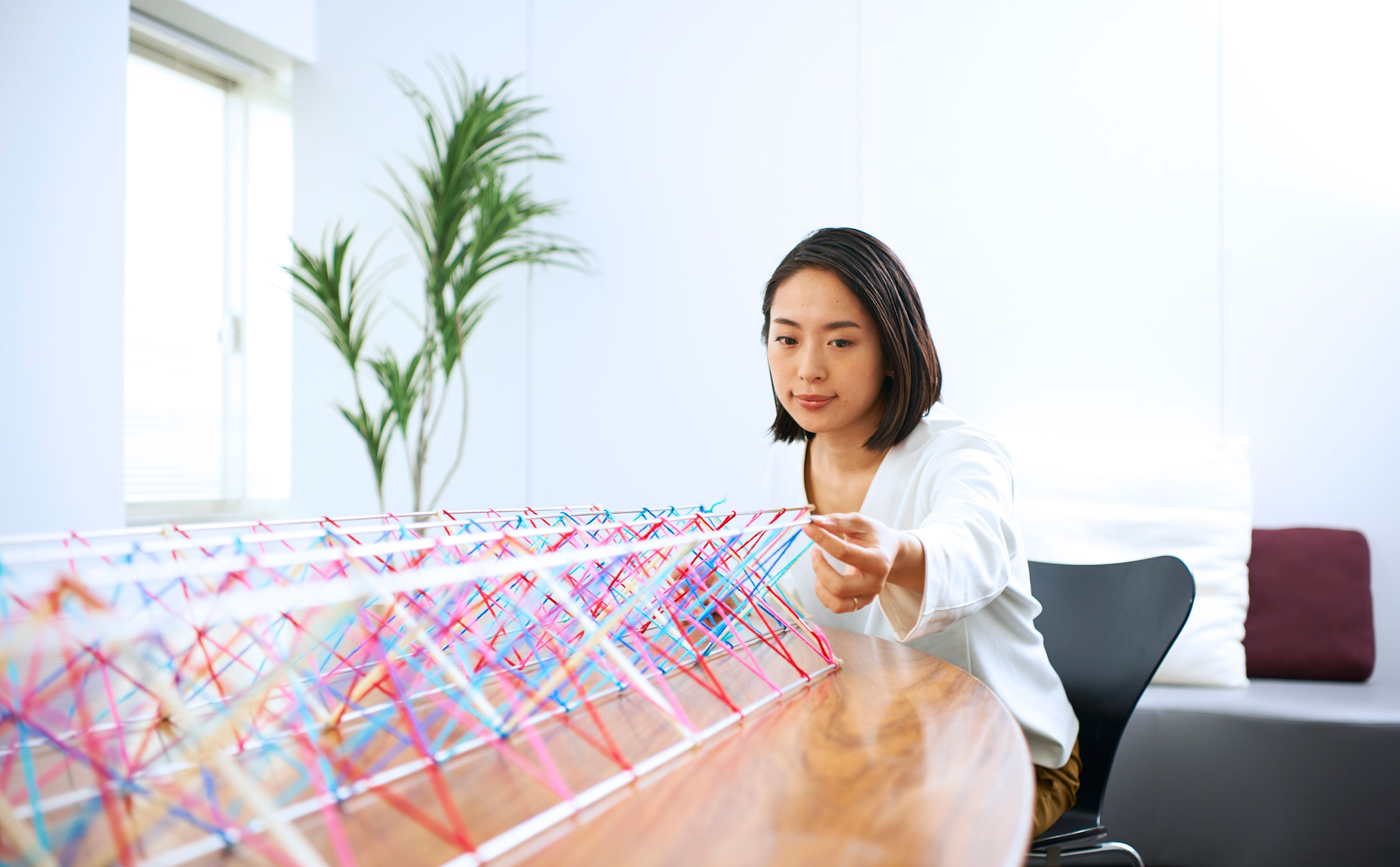
- Reiko Kawatei
- Working in the Lighting Design Department, where she creates pendant lights, chandeliers, and other light fixtures for homes. The scope of her work extends from exterior design of the fixtures to product planning and involvement with promotion work such as catalog direction. For the Panasonic Design Exhibition held in fall 2017, she created a prototype called Weaving the Light.
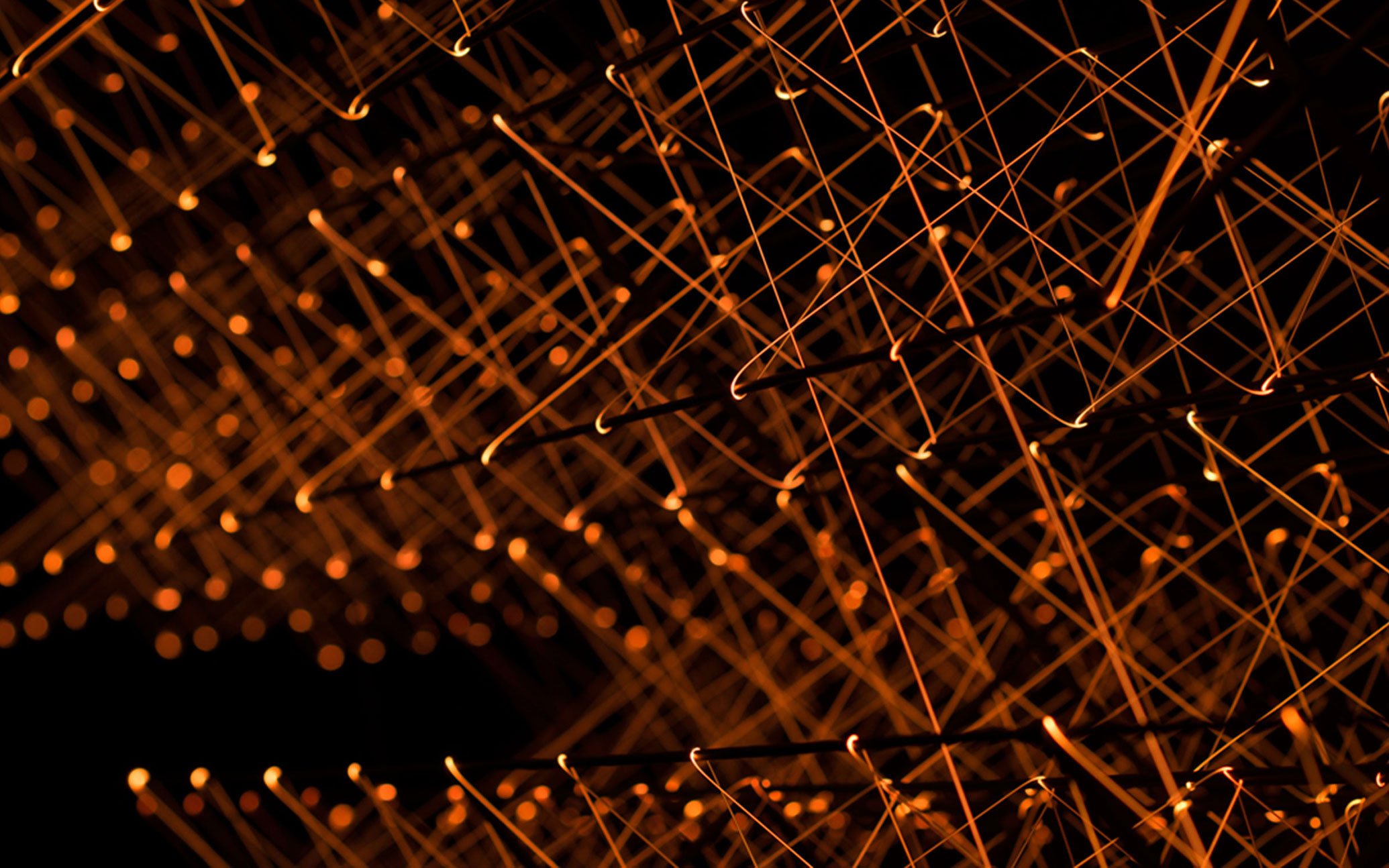 Weaving the Light: searching for new possibilities for lighting
Weaving the Light: searching for new possibilities for lighting
I have the desire to create with my own hands and most of all to see with my own eyes enchanting light of a type never seen before. The prototype Weaving the Light was created through repeated trial and error in a fascinating process.
It began with an inquiry from inside the company to look for new possibilities with lighting. I decided then to try designing a lighting device based on lasers (the light source of the future) for use in homes and commercial facilities. Laser lighting is in use commercially but not for homes. It is highly directional, so it has to be adapted for greater comfort to be used in places frequented by people. Though my job is to design lighting for homes, this was my first time to work with lasers.
Turning a totally new idea into practical form
After trying out a few things, I learned that lasers could be combined with optical fiber to create “threads of light.” Compared to other types of light like LEDs, the strong directivity of lasers allows them to effectively fill optical fibers with light. I realized that this would be a highly attractive factor. One idea I’d been interested in before was the concept of weaving light. With lasers and optical fibers, it looked like I could actually make it work now. If I could build it out of flexible strands of fiber, it would fit well in architectural spaces to look manmade and yet with a natural touch, creating a wonderful effect. Searching for an intricate yet nature-inspired look, I decided to collaborate with Nao Tamura, a designer living in New York.
The designer’s role is to envisage the goal
In the conceptual stage I tried out various different types of optical fiber, transparent materials and ways of putting them together. Bending the fibers, for example, made light build up and then diffuse from that point, creating a very organic type of light like flames. I was fascinated by the way lasers can look more like the filaments inside light bulbs rather than just straight lines. I also saw the possibilities of lighting for dining tables by allowing light to escape from the bent part. While discussing these discoveries, we brought together what we had found into this plan under the title of Weave, going back to my original concept. I learned a lot from Nao about how to maintain a balance between a pliable look with a close-fitting design to assimilate into the architecture.
To create the actual prototype, I formed a project team with an engineer and modeler. When I showed the idea to the others, they all said how much they wanted to see it for real, and that it was sure to be an amazing item when finished. This motivation allowed us to get through the various problems that had to be overcome. Envisaging this concept no-one has ever seen before as the goal provided the driving force in the project, showing the power of design.
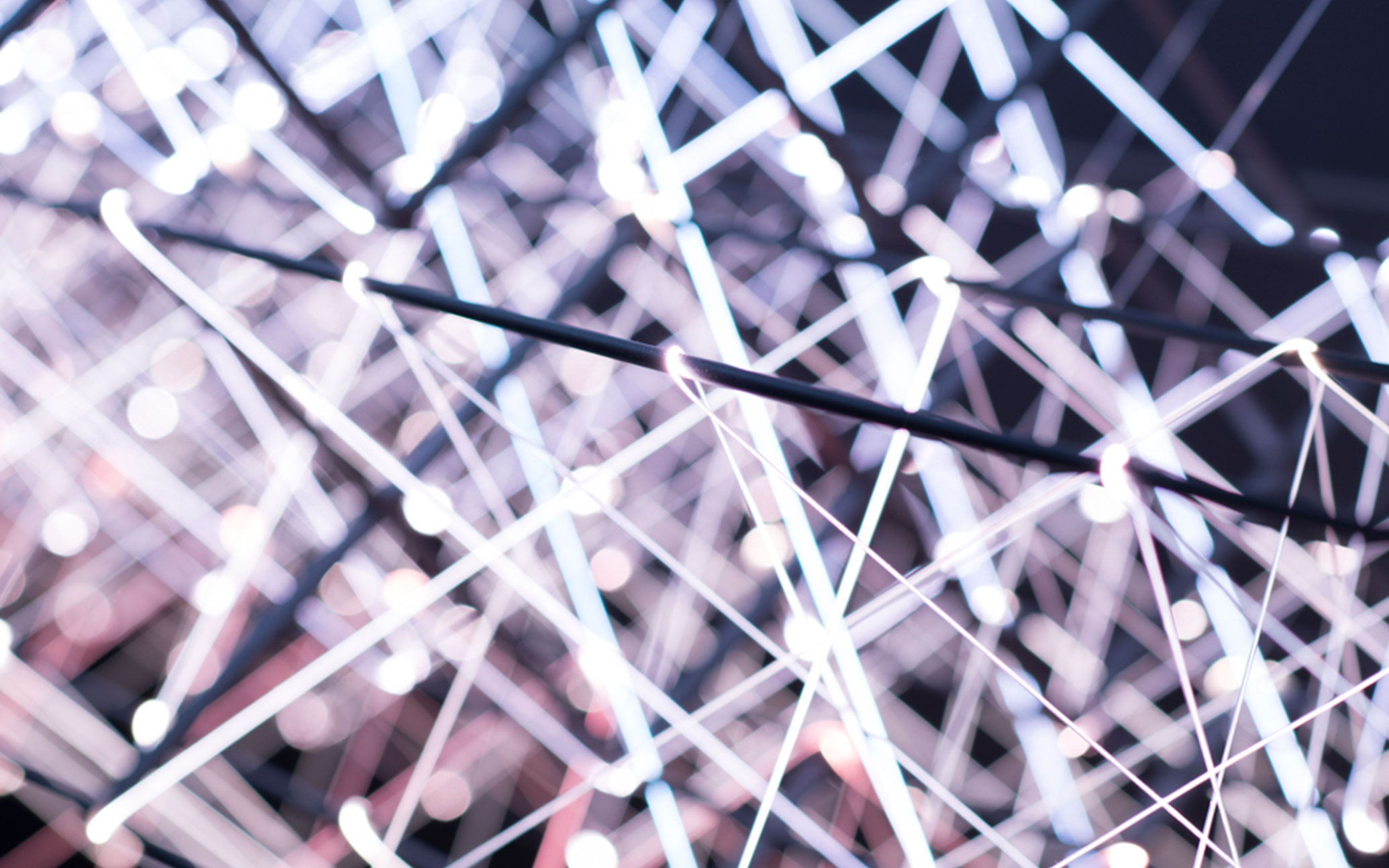 Turning the possibilities of tomorrow into reality
Turning the possibilities of tomorrow into reality
We don't have many chances to show prototypes to ordinary customers, so the Panasonic Design Exhibition was my first experience at doing so. I was simply overjoyed to hear people coming into the booth and saying how wonderful the light was the instant they saw it. LEDs still have advantages in practical terms. But lasers are still in the research stage, with a lot of potential left to explore. Both have distinct characteristics, so I think lasers should be worked on as a light source with greater energy saving properties predisposed to fields with different qualities and aptitudes, rather than replacing LEDs as a whole. I think this exhibition is just the first step toward a future where lasers are household lighting. There are still a lot of obstacles to work through to create a commercial product, but showing the potential of lasers in this prototype has put us on track to reach that goal.
I was very lucky, I think, to have this chance at this stage of my career, when I had enough experience of working with lighting to see this project through. Before when problems became clear I would become uncertain or anxious, but this time around instead I took on one challenge after another with a levelheaded mindset. This was a new experience for me, so I think this project was certainly a very valuable one in a lot of different ways.
